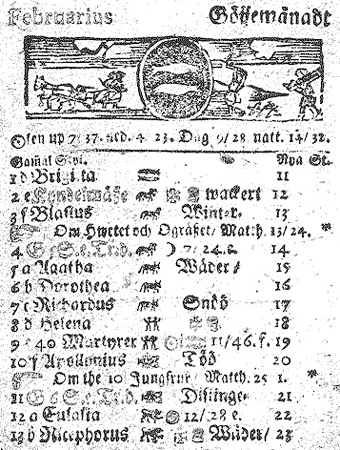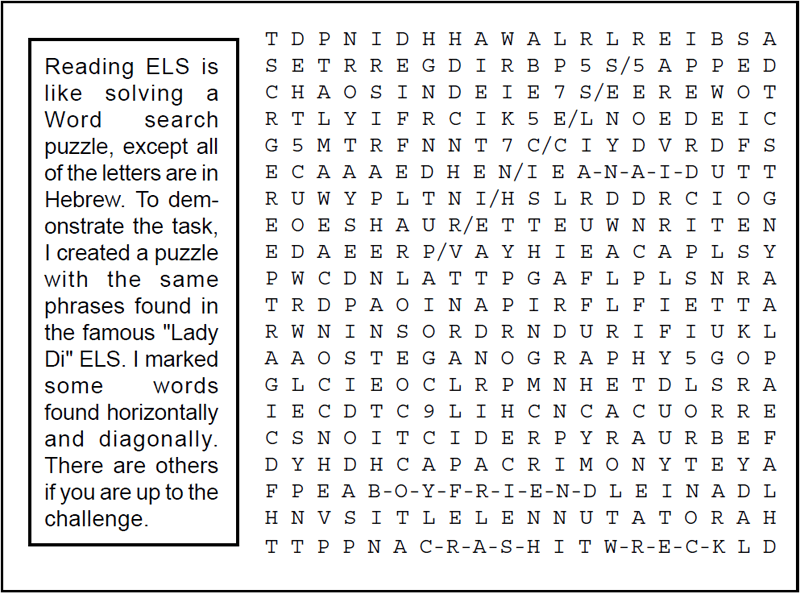“Save yourself, serve yourself. World serves its own needs, listen to your heart bleed. Tell me with the rapture and the reverent in the right - right. You vitriolic, patriotic, slam, fight, bright light, feeling pretty psyched.”
- REM, Its the End of the World As We Know It (And I Feel Fine)
 There is an axiom that states,
“Those who do not learn from history
are doomed to repeat it.” No, this is
not an epithet on the values of studying
for your social studies finals. It’s
a famous quote, made by too many
to cite an author, but it is generally
accepted as a universal fact.
Shaurette’s Corollary is “The only
thing we have learned from history is
that we have learned nothing from
history.”
There is an axiom that states,
“Those who do not learn from history
are doomed to repeat it.” No, this is
not an epithet on the values of studying
for your social studies finals. It’s
a famous quote, made by too many
to cite an author, but it is generally
accepted as a universal fact.
Shaurette’s Corollary is “The only
thing we have learned from history is
that we have learned nothing from
history.”
However, is this truly because we are not learning from our mistakes, or could it be possible that we find the future so frightening that we seek comfort in repeating past accomplishments?
Cycles make sense to humans. One needs only to think about the sun, or perhaps a clock, to see this in action. A clock is nothing more than a way to measure the solar cycle; an attempt to reproduce a natural cycle.
Humans also perceive events in a linear fashion. Everything that has a beginning has an end. We like to therefore string these two philosophies together and we get: Everything which has a beginning, has an inevitable end, but which starts again, renewing the cycle. We can see this in the lunar cycle for example.
In his book, The Myth of the Eternal Return, Mircea Eliade makes the claim that archaic man chose to continue to repeat those acts perpetrated by those that came before him. It is this repetition that is the essence of religious rituals. The ritual act symbolizes the act that came before, in the hopes of making it happen again.
This desire to cause repetition is not limited to ritual, but appears in the desire to predict the future. Again, since we are cursed with seeing things linearly, if ritual failed to make things repeat, we resort to presuming it will repeat itself at some point. We know things repeat; we may just not live long enough to see it happen.
So early man learned how to observe other cycles in order pinpoint reoccurrences of special events. The most common method was to observe the stars. Astronomy led naturally to using astrology to predict or give advice the future, or determine the nature of things.
Finding patterns in groups of stars, or constellations, that look like animals, famous heroes, and deities, allowed us to apply their characteristics to them, and in turn back to us when the constellations appeared in special places. These rules of their positions are followed by many cultures and still help guide people on a daily basis. But astronomy led to the creation of complex calendar systems as well.
Many early forms of calendars were very much like what we use almanacs for today. We know that certain seasons yield certain crops, and bring certain weather phenomena. We use statistics in our modern almanacs to say that our previous high and low temperature recorded on specific days form a range of expected temperatures.
Following trends, like El Niño, allow us to predict when we might deviate from expected averages. Our most sophisticated modern meteorological sciences still derive from knowing past patterns and applying them. to future weather predictions.
 Ancient calendars were very
similar, but the trends they often followed
were associated with the progression
of the heavenly bodies.
Even before the development of the
simplest of telescopes, constellations
and planetary orbits were
known and tracked with amazing precision.
Ancient calendars were very
similar, but the trends they often followed
were associated with the progression
of the heavenly bodies.
Even before the development of the
simplest of telescopes, constellations
and planetary orbits were
known and tracked with amazing precision.
One of the most sophisticated calendrical systems was devised by the Mayan civilization of South America. The Maya lived in the areas around Southern Mexico as early as the third century A.D., but apparently disappeared around the 12th century. The Mayan language was still spoken by their descendants when the Spanish Conquistador’s found them, but they did not know much about their ancestors’ legacy.
It wasn’t until the 18th century that the temples, pyramids, and stelae monuments were discovered, covered in Mayan hieroglyphs. These hieroglyphs were eventually decoded which helped explain the system of three separate calendars that the Maya used.
The most complex of these was also one of the most accurate ever devised in calculating a solar year. It is known as the Long Count, which is a measurement of time that includes five different numbers. (Compare this to our system of yyyy/mm/ dd, which is only three numbers.) These five cycles measured the days up to the largest cycle, which is a span of time of 1,872,000 days, or roughly 5125 years. The current cycle began on 13.0.0.0.0, which correlates to Aug. 13, 3114 B.C. of our calendar.
This cycle will return to the same position on December 21, 2012. This date has now become one of the most specific, ominous dates of prophecy. The fact that it lands on a winter solstice is a matter of debate, that being of course if it was an intentional ending date or not.
What is claimed about this last day of the “Grand Cycle” is that it is the last date on the Mayan Calendar. Portending this to be a predicted Final Day of the Earth; the idea being the Mayans did not foresee the need to calculate beyond this date. This is only true if you do not understand that as a cycle it will continue from the beginning to count off another Grand Cycle on Dec. 22, 2012, which will usher in another 5125 years.
Other would be prophets are scrambling to search their sources for anything that matches this date. For example, astronomically speaking, the earth’s procession through the galaxy which reach a unique point, aligning it with the center of the galaxy.
Again, such an amazing coincidence begs the question, could the Mayans have known this, calculating their Grand Cycle to end on his date, bringing us to the endpoint of our cycle around the galaxy? This we may never know. Based on evidence uncovered about the astronomical data they did calculate, regarding eclipses, comets, etc., it seems possible. Does it really mean anything, though? Is the Age of Man going to come to an end, or will a New Age dawn that day?
Of course many others are finding this sign to be quite potent and are interpreting old predictions to meet this date, including finding ways of stretching Revelations 11’s visions of Armageddon to 2012. Those same prophecies would suggest the antichrist would come to power in 2004… this year… an election year, by an amazing coincidence. Or is it?
Another feature of humanity’s fascination with repetition is that when we find repetition out of context, where we normally wouldn’t expect it, we believe this must imply some meaning. Whenever statistics would tell us that that something should not happen, or where chaos is the ruling factor, to find a pattern often deems study as a divine message.
 Probably the most fascinating
example of this is the phenomenon
that is known as the Bible Code, or
the Torah Code. This is a wonderful
application of new technology against
an old source to find new meanings.
Thanks to the power of mathematical
probability, we can find a phrase
describing modern events in a document
that we know is quite old. The
document that was used first was
the Hebrew Torah, also known as the
first five books of the Old Testament.
Probably the most fascinating
example of this is the phenomenon
that is known as the Bible Code, or
the Torah Code. This is a wonderful
application of new technology against
an old source to find new meanings.
Thanks to the power of mathematical
probability, we can find a phrase
describing modern events in a document
that we know is quite old. The
document that was used first was
the Hebrew Torah, also known as the
first five books of the Old Testament.
The technique is known as Equidistant Letter Skipping, or ELS, which allows us to search for words or phrases very much like a word search puzzle from a newspaper. But instead of looking for the word to be spelled out exactly, a method of skipping the same number of letters is used to find the words we want. This implies perhaps that these phrases are encoded in the Torah. This encoding technique is known as “steganography”, which is the hiding of a message within an otherwise normal picture or document.
The most famous case of a Bible Code perhaps is the one that predicted that Princess Diana would die in a car accident in France in 1997 (Jewish year 5757). Keywords that were found in the now famous matrix are Lady, Diana, Spencer, Princess, Wales, chauffer, photographer, tunnel, Paris, France, etc. It is quite remarkable and would seem statistically impossible for all of these terms to be randomly scattered so closely together, in a 3000 year old Hebrew text. Holy cryptography, Batman!
One of the wonderful flexibilities, and therefore faults, of the Bible Code is the fact that Hebrew spelling is very flexible because of the inconsistent uses of vowels. A great website which illustrates this is: http://cs.anu.edu.au/~bdm/dilugim/abulafia.html. The website discusses an example of one of the modern rabbis whose names was found in a Bible Code, Rabbi Haim Abulafia (1660-1744 A.D.).
There is a photograph of a synagogue of Rabbi Abulafia in Tiberias, which is in Palestine. On different signs on the building dedicated to him, his name is spelled four completely different ways in Hebrew. Amazingly, the version of his name that was found in the Torah as a Bible Code was a fifth unique version, and yet is still just as legal as the others. Simply put, you try to find the one that fits into your search, and keep hacking away until you find a match.
One of the proponents of the Bible Code, author Michael Drosnin, believes that he found not only a great mystery, but perhaps even a “signature” of God by finding these secret codes. He challenged his detractors in a 1997 Newsweek article to find the predictions of the assassination of a prime minister in “Moby Dick”. Well, the challenge was taken up and quite a few “predictions” were found.
First and foremost was the assassination of Prime Minister Indira Gandhi, which if nothing else satisfied the challenge. But other predictions were found, including Martin Luther King, Jr., and John F. Kennedy (including the phrase “shot in the head” by a “concealed assassin”). The moral of this story is, either the word of God is in every printed book… or, you can find a pattern in any finite random collection.
So what does all of this mean? Can the future be predicted? Well, yes but specific requests will be met with specific answers. Statistically, anything is possible if you know the odds. Statistics can be used to Prove any truth. With examples provided by history, we can find anything we want. Hindsight is 20/20.

Are we living in the End Times? Perhaps. If you presume that all of the predictions that came before now failed because they were misinterpreted, then the chances increase for this being The End.
But even still, is the End of The World As We Know It a bad thing? I don’t mean to sound melodramatic or morbid. I prefer to believe in the cycle of all things, and I think that once the Interesting Times that we live in now come to an end, life on earth will still go on.
Whether the penitent will be raptured leaving the sinners behind is the case, or we kill off most of our population in another massive bloody war, we will go on. Maybe those who do will start anew, making the world a better place. This is the dawning of the Age of Aquarius after all. One cycle ends and another begins.
“When the moon is in the Seventh House, and Jupiter aligns
with Mars, then peace will guide the planets, and love will steer
the stars.”
- The Fifth Dimension, Aquarius
Originally published in Acrimony Magazine Issue #7 March 2004











